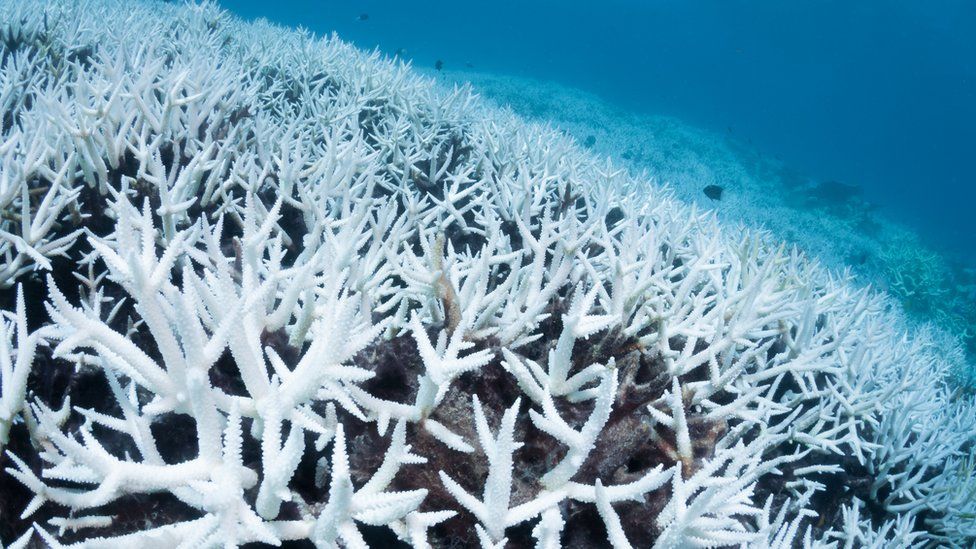ARTICLE AD BOX
 Image source, Getty Images
Image source, Getty Images
Coral bleaching is often fatal
By Tiffanie Turnbull
BBC News, Sydney
Australia's iconic Great Barrier Reef is suffering another mass bleaching event, officials have confirmed.
Often fatal, bleaching occurs when heat-stressed corals expel the algae that gives them life and colour.
It is the fifth time in eight years widespread damage has been detected at the Unesco World Heritage site.
Only two mass bleaching events had ever been recorded until 2016, and scientists say urgent climate action is needed if the reef is to survive.
Stretching over 2,300km (1,400 miles) off Australia's north-east coast, the Great Barrier Reef is the world's largest reef and one of its most biodiverse ecosystems.
It has been World Heritage-listed for over 40 years due to its "enormous scientific and intrinsic importance", but Unesco says the icon is under "serious threat".
Sea temperatures in the national park had been heightened for some time over the summer, The Great Barrier Reef Marine Park Authority said a statement on Friday.
And a massive aerial survey of some 300 reefs - from the tip of Australia down to the city of Bundaberg on the east coast - has now confirmed most are experiencing prevalent bleaching.
The severity and depth of the bleaching can only be determined by in-water surveys, which the Reef Authority is undertaking.
The damage - while widespread - likely varies greatly across the reef, and some corals may be able to recover if conditions cool, it added.
"The Great Barrier Reef is bigger than Italy, and it is important to remember that impacts to the Reef are highly variable," Chief Scientist Roger Beeden said.
"The Reef has demonstrated its capacity to recover from previous coral bleaching events, severe tropical cyclones, and crown-of-thorns starfish outbreaks."
Similar bleaching events have occurred around the world this year, the Reef Authority said, demonstrating again why urgent action is needed to save them.
"Climate change is the greatest threat to the Great Barrier Reef, and coral reefs globally," Dr Beeden said.

 10 months ago
17
10 months ago
17








 English (US) ·
English (US) ·